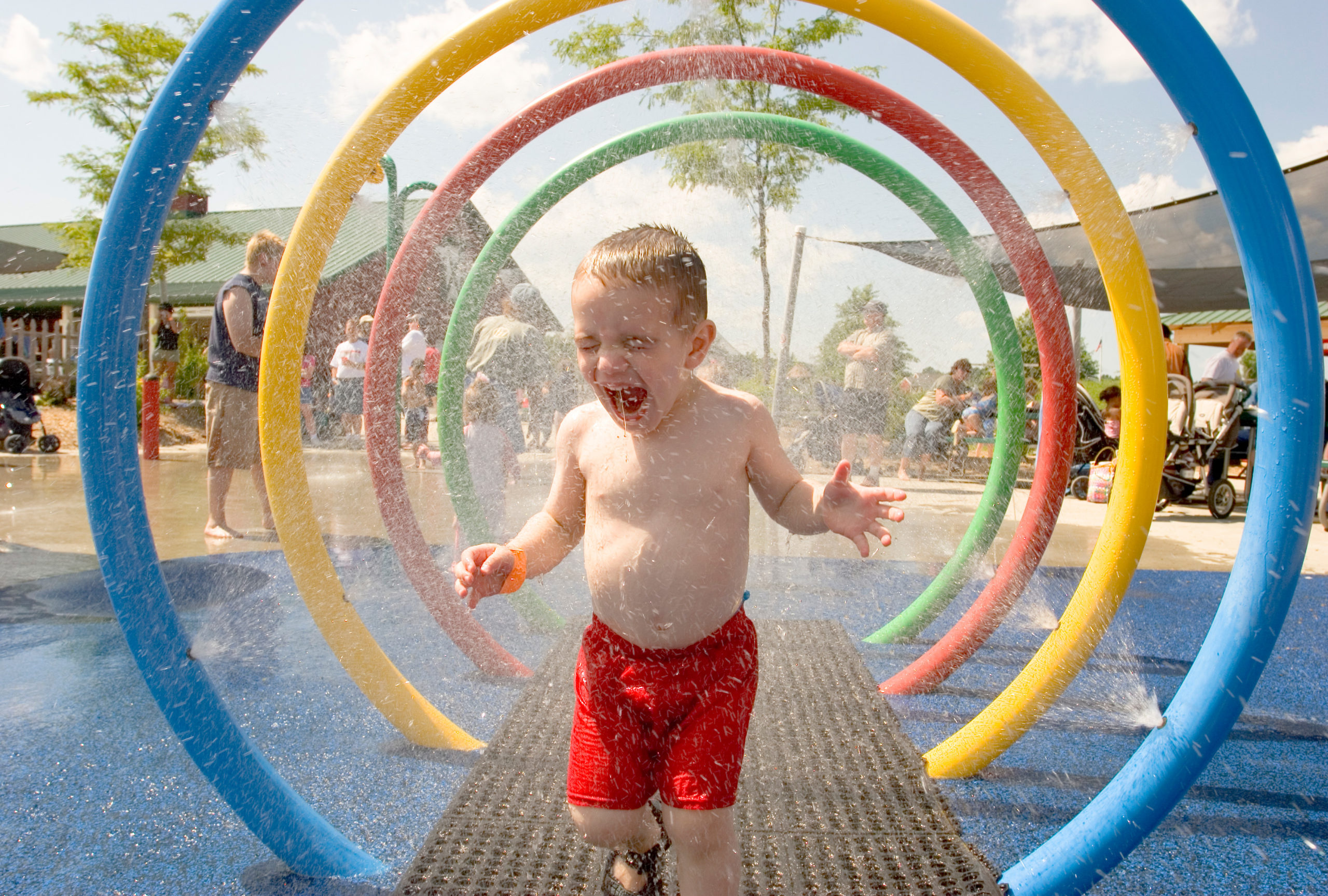Splash pads can be a blast. Here’s how to make sure they’re safe, too.
One of my close friends once asked if I would join her and her daughter at the “splash pad” for an afternoon of fun and laughter on one of the hottest days of the year. When she texted this to me, I honestly had no idea what she meant, but once I experienced a few hours at this fun and cooling water activity, I now understand this world by the terms: splash park, splash pad, spray park and spray-ground.
They are different terms for the same thing: an arrangement of spray features surrounded by a non-slip surface and often inhabited by a gaggle of wet, happy kids. But, are they good, safe choices for parents and children on these hot summer days?
Pros and cons of splash pads
A splash pad (or spray pool) is a recreation area with water-spraying nozzles of various kinds with little or no standing water. They are an easy alternative to swimming pools for many families concerned about water safety. Because there is no standing water, there’s less of a need for lifeguards or other supervision and there is little risk of drowning. But even with a very small risk of water-related injuries like drowning, splash pads are not as safe as they should be, and people are being injured.
According to the National Electronic Injury Surveillance System database, in 2014 alone, estimated 20,000 injuries occurred on on pool decks, splash pads or water parks, resulting in an emergency room visits.
The common denominator in all these splash pad injuries is the surfacing. From personal research that I conducted after visiting this particular splash pad, the most common splash pad surface is concrete, often treated with an abrasive coating. With the leading cause of admission to Monroe Carell Jr. Children’s Hospital at Vanderbilt being unintentional pediatric falls, this type of flooring is concerning.
Not only do the risk of injury from falling came to mind as I enjoyed the cool water splashing on my back, but also the risk of contamination. People may not realize that although there is no standing water in these attractions, the spray water will rinse any contaminants (for example, diarrhea, vomit and dirt) down into the water holding area and be sprayed again. In other words, the water is recycled through the system. As a result, it is possible for the water to become contaminated and make people sick.
Splash pad safety
Water play provides a rich sensory experience for the developing child. Playing with water is important for your child’s sensory integration and development. Splash pads provide a great way to do this, but be vigilant in what and how you assess the safety of the splash pad before you and your child use this type of warm-weather fun!
Here are a few tips to ensure splash pad safety:
- Keep an eye on your kids to make sure they are safe; there is no substitution for supervision.
- No running, rough-housing or jumping in the splash pad area.
- Make sure the splash pad that you use treats the water to keep it safe for everyone to enjoy. Untreated water can lead to illness.
- Bring lots of water to drink. Active kids need a lot of water on a hot day.
- Tell your little ones not to drink the water, or they might think the nozzles are water fountains.
- Have your kids use the bathroom frequently and change soiled diapers immediately to cut down on the risk of contamination.
- Use a chemical free sunscreen and re-apply often.
Remember, use every opportunity you can to talk with your child on how to be safe and stay safe. Most injuries are both predictable and preventable.
This post was written by Emily Riley, a former injury prevention program manager for Be in the Zone at Monroe Carell Jr. Children’s Hospital. Riley has a background in adolescent health and development, and when not working, she enjoys running, cooking/baking, being outdoors, exploring local coffee shops and spending time with the people she loves. She also has a hard time putting down a good book.


